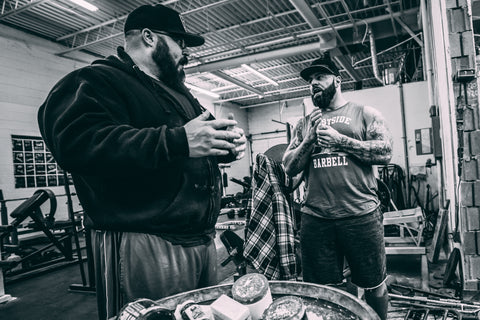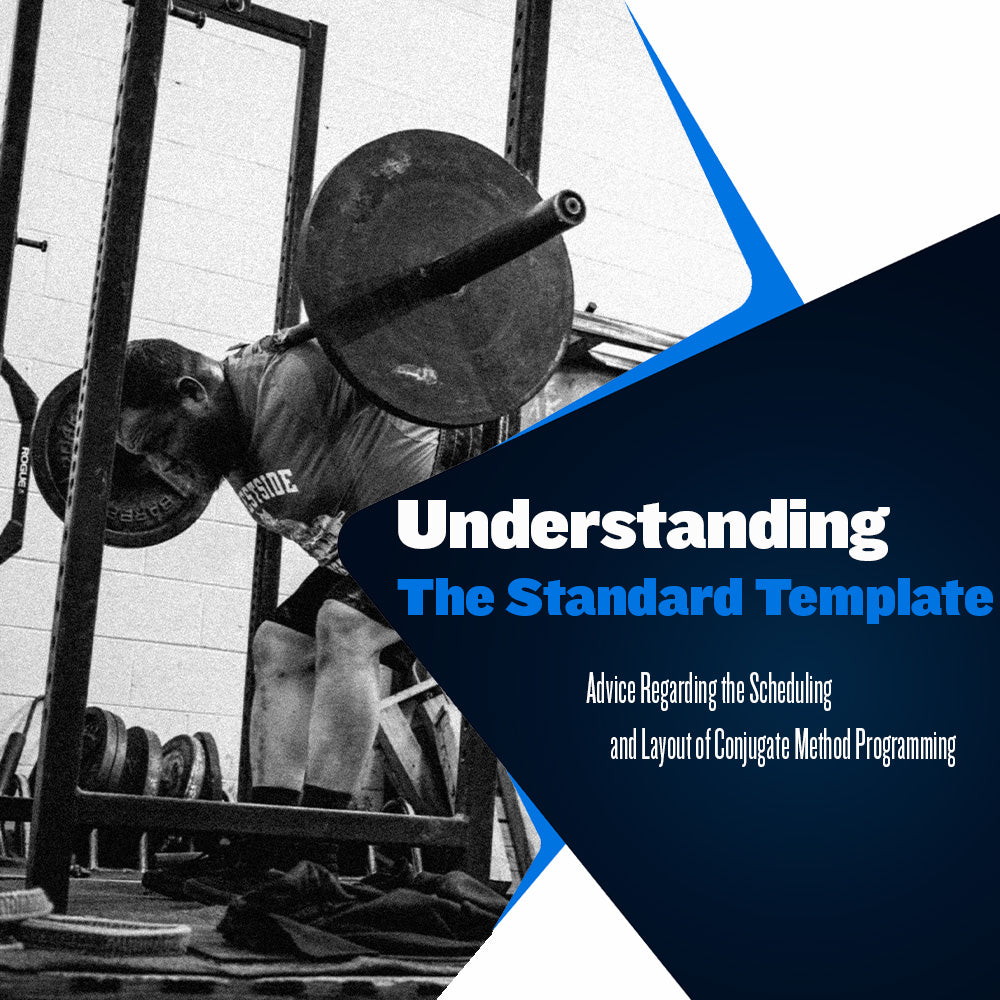Understanding The Standard Template

Success with a training program depends significantly on programming design, regardless of the exact methodology. Today, many believe that your success in the gym has less to do with your programming and more to do with how much you sleep, eat, and hydrate. While these things are of great importance, it is outrageous to claim the program you follow doesn't matter.
The program you select is the roadmap that leads you to your training goals. Think of it like this: if you are about to embark on a 1,000-mile trip, would you want the directions that may get you there at some point, or do you want the most efficient route to your destination?
Easy choice; nobody wants to waste time. However, due to misinformation and blind loyalty to faulty methods, many folks continue to believe as long as you are dedicated to a program, you will have success.
Where did they get this information? Coaches who blame the lifter, not the method. You've likely heard a coach say, "Your problem isn't your programming. It's your discipline and dedication." After all, there is no way your coach's programming is garbage.
The truth is, your exercise programming will make or break you. You risk wasting incredible amounts of time and energy without the correct exercises selected and scheduled in the proper order. Considering most of us have a full work schedule before we hit the gym, time and energy are valuable.
To ensure our readership properly understands the basic structure of a Conjugate Method program, I want to provide a quick explanation of the Conjugate Method Standard Template.
Training Schedule
The most crucial aspect of your programming will be the timing of your training. Why? Because an athlete needs to be adequately recovered session to session for each training day to be utilized as effectively as possible.
Here is the Conjugate Method Standard Template training schedule:
Monday - Max Effort Lower
Wednesday - Max Effort Upper
Friday - Dynamic Effort Lower
Saturday - Dynamic Effort Upper
This training schedule keeps our max effort training days strategically spaced apart to ensure adequate recovery is possible between max effort training days. Dynamic effort training days are done back to back, considering the training demand they place on the body is less extreme than max effort.
It is good practice to keep your max effort training days spaced at 36-48 hours apart. Maintaining these timeframes will ensure the best results on each max effort day. Failure to do so can lead to lackluster max effort training caused by the body being in an unrecovered state.
The expectation is not to be fully recovered and feeling great, but to be recovered enough so that you can properly engage in max effort training.
Design of a Training Day
Once you have correctly scheduled training days, it is time to begin writing the programming you will execute during those training days. To ensure success, you must maintain a proper order of exercises during your training day.
You want to organize the training day to ensure you get the most out of it. How? By completing each exercise in the correct order of importance. Here is how you should lay out each training day regardless of max or dynamic effort:
Warm-up (keep it simple, keep it under 10 minutes)
Main Exercise
Accessory Exercises
GPP / Conditioning Work
At Westside, our primary means of warming up is performing lightweight reps using the same exercise we will be using for that training day. Otherwise, we may perform some KB swings, Reverse Hypers, or ATP squats / walks to get warmed up.
The main exercise you choose will depend on the training day. If it's max effort lower, it can be any squat, deadlift, or good morning variation you choose. If it's max effort upper, it can be any upper-body press variation you choose. Dynamic effort lower will focus on box squats, while dynamic effort upper will focus on speed bench.
You can choose to use accommodating resistance and specialty bars during your max effort work at any time. When performing DE lower, we will always box squat or free squat against accommodating resistance (bands or chains). When we perform DE upper, we will always bench against accommodating resistance.
Accessory exercises occur immediately after the main movement and will make up around 80% of the overall volume each training day. Accessory exercises should be selected based on weaknesses or strengths that an athlete must develop to continue progressing in the gym and sport.
GPP / conditioning work will always be performed at the end of a workout and serves as a means to improve an athlete's conditioning and overall wellness. Performing exercises such as sled pulls, or farmer's walks may not sound like a good time after a grueling training day, but the work lays the foundation for future strengths and abilities to be built.
Your Method Matters
The method you choose and how it is programmed will impact your success more than any other aspect of your life. Can more sleep, food, and hydration solve a lot of issues? Absolutely. Can you sleep, eat, and drink your way out of a bad training plan? No.
This is a game of input/output. The training you input will decide your output on the field or platform. Having your training days appropriately scheduled and your exercises properly organized and selected will quickly have you on the path to strength training success.
As a beginner, almost any amount of training will allow you to improve. However, how cleverly written your programming is will decide the level of strength and ability you can ultimately achieve. If you are doing the right things outside the gym but still struggle to make gains in the gym, don't let some coach tell you it's you and not the methods.
This article aims to provide you with an understanding of the basic template to enable you to take your programming into your own hands. Are coaches good to have? Certainly. Are there great coaches out there? Yes, many. However, if you are dealing with an egotistical coach who always blames you, please take this template, write your own programming, and fire your coach.
Training Day Example
Max Effort Lower
Main Exercise:
Giant Cambered Bar Good Mornings - work up to a top set triple
Accessory Exercises:
Giant Cambered Bar Beltless Squats - 4 x 5
Inverse Curl Machine - 5 x AMRAP
Reverse Hypers - 5 x 15-20
Abs - 5 x 15-20
GPP / Conditioning:
Sled Pulls - 12 trips, 25 yards per trip (heaviest sled you can pull while completing all trips at full distance)
Sources:
Simmons, L. (2007). Westside Barbell Book of Methods. Westside Barbell.
Verkhoshansky, Y., & Siff, M. C. (2009). Supertraining. Verkhoshansky.





